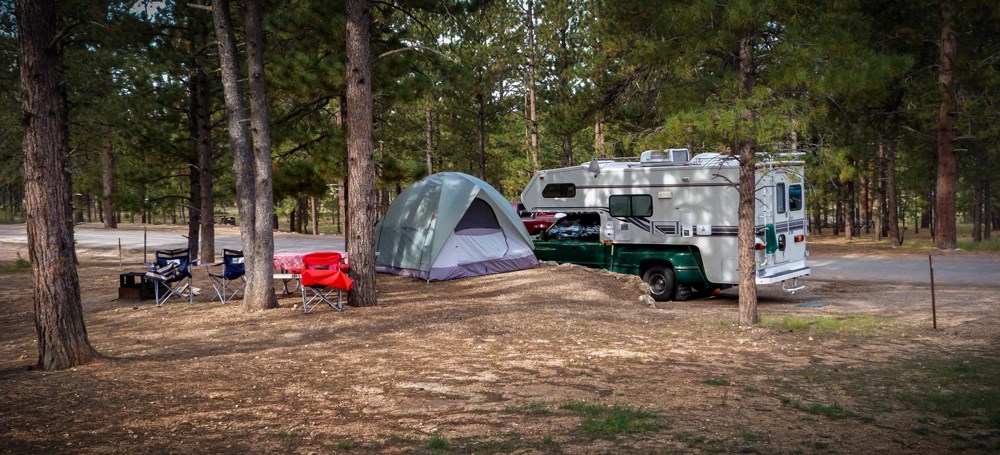
Anyone who has ever been camping will have a few camping tips to share, and so here are just a few that I’ve acquired over time. I do not claim to have invented these ideas but they are things that have stuck in my head. Some you may have heard of and will be familiar with, some may not be helpful, but hopefully (maybe) you’ll like the sound of just one – or it may even give you a spark of an idea – and you’ll find a way of using it on your next camping trip.
Firstly, it is always a good idea to have a Practice Camp – if not in your garden, then in someone else’s, or at a quiet spot somewhere where you won’t be disturbed. Basically, it is much better to get used to your canvas tent and basic gear first, before you pack the car up, drive a good few miles and then discover that you underestimated the time required for pitching and setting up camp. Or worse, that you don’t thoroughly understand how to erect the tent in the first place. If you have a bell tent it is one of the easiest tents around to erect – but having said that I have still seen some rather basic mistakes, which have resulted in the tent being unstable, wonky and something that would not resist much of a breeze.
Once properly erected for the first time, and especially if it’s in your own garden, a good idea is to furnish it with stuff that you think you’d either (a) need or (b) like to have with you on a camping trip. Take time to work out what you need around you to (a) function and (b) feel comfortable.
So then you can build a check-list of essentials that you ‘need’ to take on either a short or more basic camp or alternatively things that you ‘would like’ to take on a longer more comfortable camping trip. Categorise things such as bedding, cooking, wet wear, dry wear, hot/cold weather gear, kids stuff, games, relaxation (wine!), basic kit, glamping items, whatever suits you.
Another ‘pre-camp’ tip is, split the tent poles, pegs and canvas. Bell tents should come with a main carry bag for the tent and groundsheet, a separate bag for the poles, and another bag for the pegs, mallet, spare ropes etc. This means that you are basically splitting the weight. Even if you use a trolley this makes it much easier to handle the basic tent components.
One final canvas bell tent tip – always use a footprint. A footprint is basically any old (cheap) tarp that you place underneath the actual tent groundsheet. You can buy expensive ones but it really is not necessary. Ensure that the footprint is around 5cm/2inches smaller than the actual outermost edges of the groundsheet. Using a cheap builders tarp found in any DIY store will do. Then simply cut to size. The idea behind the footprint is that it helps to keep the bulk of the dirt off the underneath of your groundsheet, making pack-up much easier. And it needs to be slightly smaller than your groundsheet to stop rain from running in between the two and ‘pooling’ under your tent.
Kids usually love camping and being outdoors. They love the freedom and the resulting dirt! So kids’ clothes may need to be frequently changed. A suggestion is to pack kids’ clothes in individually rolled bundles. For example, pants, socks, shorts, T-shirts – all rolled into individual bundles and then those bundles packed into some sort of storage case or box. This makes things a lot easier – simply pull out a bundle and hey presto! Clothes for the new day!
Speaking of storage boxes – plastic storage boxes can be easily found these days in a huge mix of sizes and styles. So to use these for packing camping essentials makes sense, as the containers themselves are lightweight, and also stackable. This means they’re easily packed into a car, and once in your tent, they can be positioned around the tent in strategic positions with a simple cover/throw over the top. They then instantly become transformed into attractive, stable, usable, table-like surfaces.
Yet another reason to take (at least one) plastic storage box with you if you have very young children, is that it can be filled with warm water to create a convenient bath-tub for a youngster. And they’ll probably love it!
Speaking of water, if you are camping on a lake, or with a boat or canoe, a brilliant suggestion I once saw was to attach your key(s) to a champagne-type of cork. If the keys are not too heavy, or if you only attach the most important one (or else attach each key to a cork) it will float if dropped into the water! Brilliant!
Another idea for storage is to buy one of those soft plastic or canvas hanging-style shoe-caddy type things. They have multiple ‘pockets’ into which, unless you really want to store your shoes, you can store kitchen utensils, clothes, candles, corkscrews or other little bits ‘n bobs. Simply hang the caddy up in your kitchen tent, or on one of the poles inside your tent.